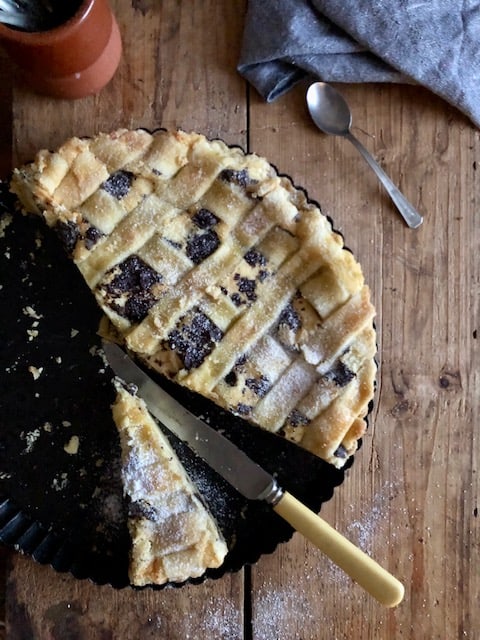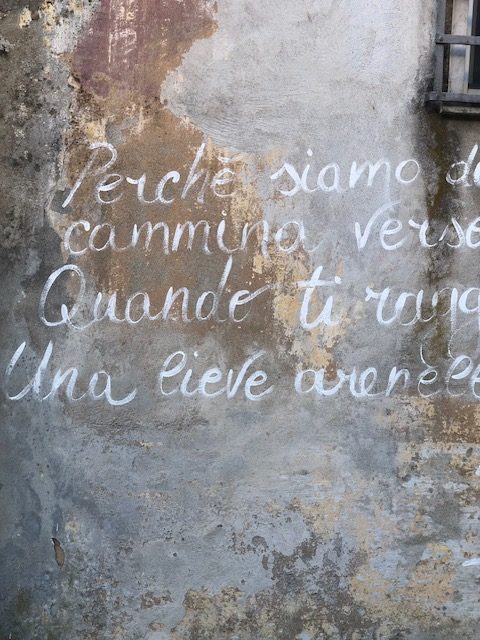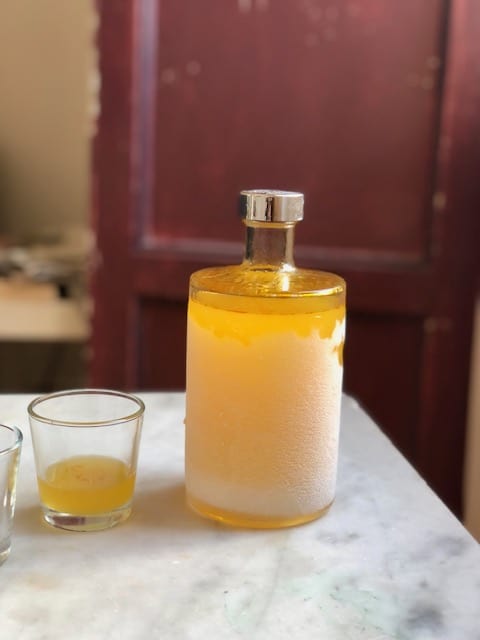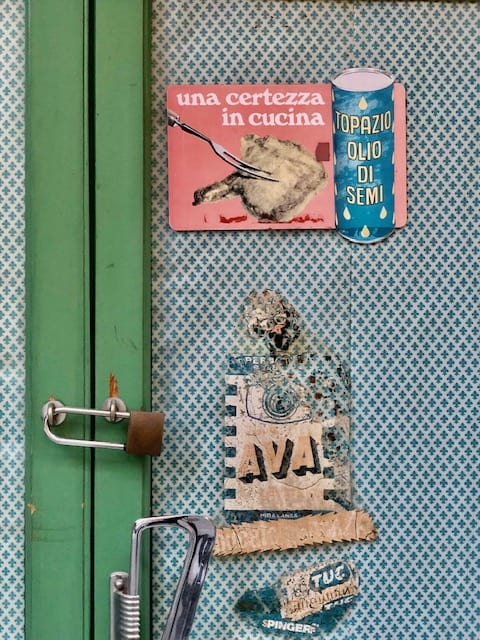

There are sooooo, so many delicious, baked, creamy filled tarts in Italy that I am wondering, where to start? I could ramble on about all of the superb key ingredients in this one, but the recipe is already a lengthy one and I fear I’d just lose you.
So, cutting to the chase – I follow an old Jamie Oliver recipe, with a good few modifications. The pastry making is a long process with several rests in the fridge and freezer. Also, it’s a little fiddly (heavy on butter & eggs creating a somewhat sticky dough), but it’s totally doable. That said, go ahead and sub a simpler shortcrust pastry recipe if you prefer. Myself, I like the ceremony of making this tart, especially the pastry and especially the lattice topping. I make it when I’ve an unhurried, chilled day planned, and the result is always soooo satisfying. The taste is just a knockout, but also the look – smart criss-cross, meets rustic seductiveness. Yep, I love it!
The tart fillings are as the name suggests. I like to play around with the original recipe, which asks for the zest of 3 oranges using a combination of orange/pink grapefruit zest depending on what is in season, plus the sublimely smooth, orange digestivo arancello. Arancello is made with Sicilian oranges and is the cousin of the more widely known, after dinner drink limoncello. We’ve a steady supply from a trusty Sicilian friend, but I suspect that finding arancello outside of Italy isn’t so easy, in which case, the zest of 3 plump oranges will deliver adequate punch.


Baked Ricotta, Orange and Chocolate tart ~ Torta di Ricotta, Arancia e Cioccolato
*Recipe adapted from Jamie Oliver, Jamie’s Kitchen (2002, p 282)
For the Pastry:
- 185g butter
- 150g icing sugar
- small pinch of salt
- 1 teaspoon vanilla extract
- zest of 1 small lemon
- 3 egg yolks
- 1 -3 tablespoons cold milk or water
For the Filling:
- 250g ricotta
- 250g mascarpone
- 125g icing sugar
- 2 teaspoons vanilla extract
- 2 eggs, separated
- zest of 1 orange plus 30ml arancello (or, zest of 3 oranges)
- 100g dark cooking chocolate
- 1 egg, beaten
- icing sugar for dusting
To make the pastry: By hand or using a food processor, cream together the butter, icing sugar and salt. Pulse in the flour until the mixture looks like coarse breadcrumbs. At this point, tip the mixture onto a lightly floured bench and finish mixing the dough by hand, patting it into a ball shape. If the mixture seems too dry, add a little cold milk or water (I usually don’t find that this is necessary). The idea is to get your ingredients to form a dough with the minimum amount of movement ie. the less you work the pastry, the less likely it is to shrink in the oven or, get chewy).
Divide your pastry into 2 parts, one larger than the other. Shape the larger piece of pastry into a super chunky, fat, short sausage shape. With the smaller piece, shape it into a somewhat rectangular ball. Wrap the 2 pastry pieces of pastry separately in cling wrap and place in the fridge to rest for at least 1 hour.
Remove the pastry from the fridge. If it is very rigid leave it sit for a while on the counter to soften. Take the larger piece of pastry, and using a knife cut thin, slithers of pastry lengthwise (about 3mm thickness). Place the pastry pieces all around your tart mold fitting them together patchwork style by gently pushing the pieces. Prick the base of the pastry with fork. Place the tart tin in the freezer for an hour (or as much time as you have).
With the smaller piece of pastry, roll it out between 2 piece of parchment paper into a long, rectangular shape of equal thickness. This will become the lattice topping for the tart, so divide it into 14 strips of about 2.5cm (no stress if they are of unequal lengths – they can be laid on the shorter sides of the pan). Gently glide the sheet of parchment paper with the pastry still enclosed onto a large chopping board or flat oven tray and place it into the fridge until needed (this will help firm it up and make it easier to handle).
Preheat the oven to 200C.
Remove the tart tin from the freezer, and line the inside of the pasty with parchment paper. Fill the pastry with dried beans or pastry weights and bake for around 12 minutes until golden. Remove that from the oven, and carefully take off the paper and the weights. Return the pastry to the oven for another 3 minutes and bake until lightly golden. Remove from the oven and allow to cool.
For the filling: Reduce the oven temperature to 170.
In a medium sized bowl, place the ricotta, mascarpone, icing sugar, vanilla, egg yolks, orange zest and if using, the arancello. Beat until creamy, smooth, and shiny.
In a separate, small bowl whip the egg whites until stiff. Gently fold the whites into the creamy, cheese mixture.
Pour into the cooled tart mold and sprinkle the chocolate chunks over the top.
Remove the board with the pastry strips from the fridge. Lay 7 strips of pastry across the tart, equally spaced, and then another 7 the other way to form a lattice. Use your thumbs to trim off an excess pastry and sealing the lattice strips to the sides of the pastry mold. Brush the pastry with a little of the beaten egg, and then dust with a little icing sugar.
Bake in preheated oven for 40 – 45 mins. Serve hot or cold.

